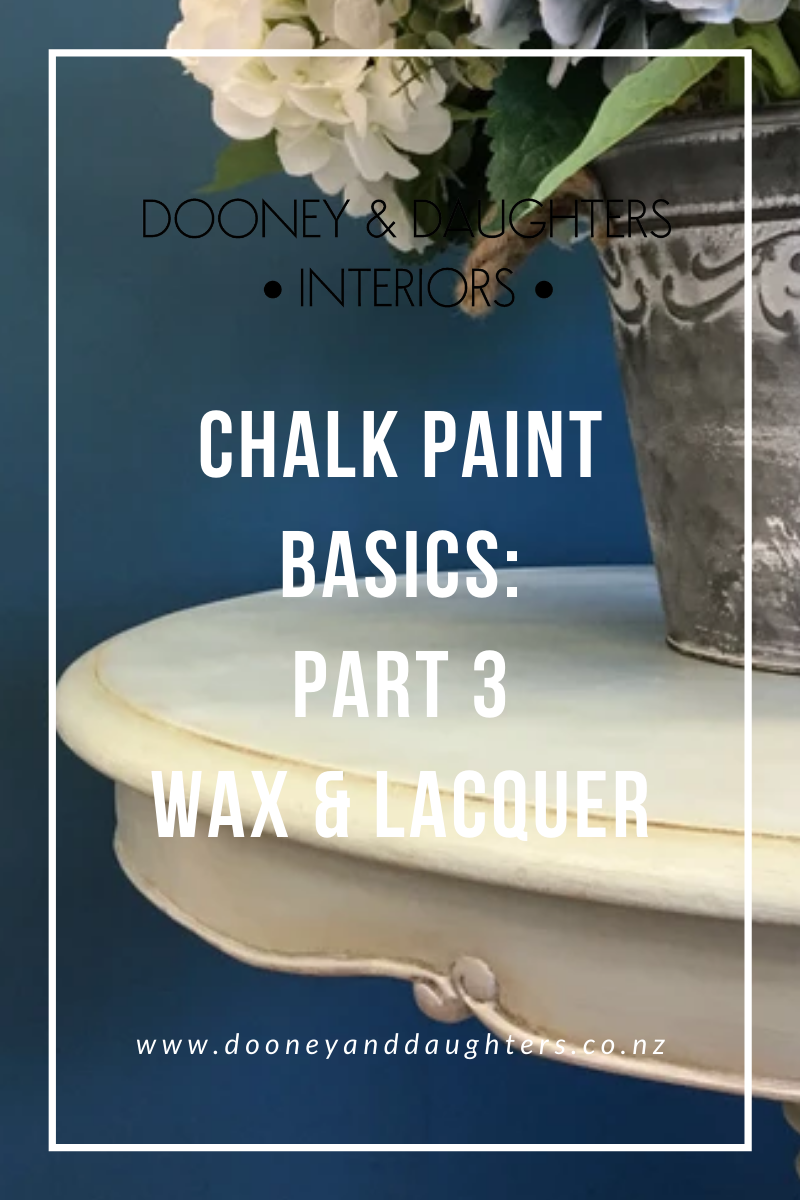
Chalk Paint Basics Part 3 - Clear Wax, Dark Wax & Lacquer
This week in our chalk paint basics series, we talk about clear wax, dark wax and lacquers. We discuss when you would use them, how to apply them, plus go into some of our favourite tips when using dark wax.
Check out part one for an intro to chalk paint and some answers to some basic questions, and part two where we talked about different paint techniques.
When To Use Lacquer vs Wax
For some this is a personal preference and they will (almost) always go for one over the other. However, there are times when lacquer is more suited than wax:
- For hardwearing surfaces. Our premium lacquers are super hard wearing, making them ideal for surfaces that are well used, like floors and dining table tops.
- For wet areas. Our premium lacquers are exterior grade, meaning that they will hold up well in wet areas, like bathrooms or kitchens.
- For outdoor furniture. Because the lacquers are exterior grade, they're perfect to use to seal your outdoor furniture if you have chosen to use premium chalk paint instead of Velvet Luxe which has lacquer built into it.
- For when you don't want a matte finish. Our lacquers come in Matte, Satin and Gloss, the satin and gloss finishes are great for those who don't want the matte finish that wax gives.

How To Use Lacquer
The premium lacquers are nice and easy to use, simply make sure there's no dust on your painted finish and brush on using a flat synthetic brush.
Tips:
- Brush on in the direction of the grain or lengthways.
- Always brush on two thin coats to catch any spots you may have missed
- If you have missed a spot, wait until it is recoat dry and grab it in the next coat, don't overbrush your lacquer while it's drying.
- If you're lacquering a dark colour, add a couple of drops of your chalk paint to the lacquer first. This will tint it and help avoid any 'milkiness' that can occur if the lacquer has been brushed on too thick.
- Keep an eye out for any drips or build up while you're painting.
So Why Wax?
Our premium chalk paint is porous, meaning that it always needs to be sealed to stop fingers marks and dust from accumulating.
Waxing is a great option, it's easy and fast to do and you can achieve a lot of great decorative effects using it which we'll go into more in part four of this series.

How To Use Wax
Brush your wax on with your natural bristle brush in sections (i.e. a drawer front at a time) and then gently wipe the excess off with a lint-free rag.
Your waxed finish will be ready to use in a couple of hours but be gentle with it, it takes 14 days to fully cure.
Tips:
- Keep your rag flat, this is especially important when using dark or coloured waxes so as to not leave any wrinkle marks in the finish.
- Make sure to rotate to a clean side of your rag frequently, otherwise you won't be taking any excess wax off.
- Wax always reactivates wax. If you have too much dark or coloured wax in a spot, use your clear wax to lift it back off.
- Use super fine steel wool to create highlights. Use the steel wool before the wax is fully dry and it will gently lift some of the colour off.
- To tone down the dark wax mix it with clear wax. This is a great way to get a softer look on light colours.
- With our high-performance wax you don't need to clear wax before using the dark wax like you do with other brands.
Facebook Live
Watch our Facebook Live for more info and to see the waxes and lacquer being used in person.
See All Of Our Chalk Paint Basics Series Here
Chalk Paint Basics Part 1 - Introducing The Artisan Company Premium Chalk Paint
Chalk Paint Basics Part 2 - Paint Techniques
Chalk Paint Basics Part 3 - Clear Wax, Dark Wax & Lacquer
Chalk Paint Basics Part 4 - Coloured Wax
Chalk Paint Basics Part 5 - Distressing & Gilding Wax
Previous Series
Check out our Decoupage Basics series!

